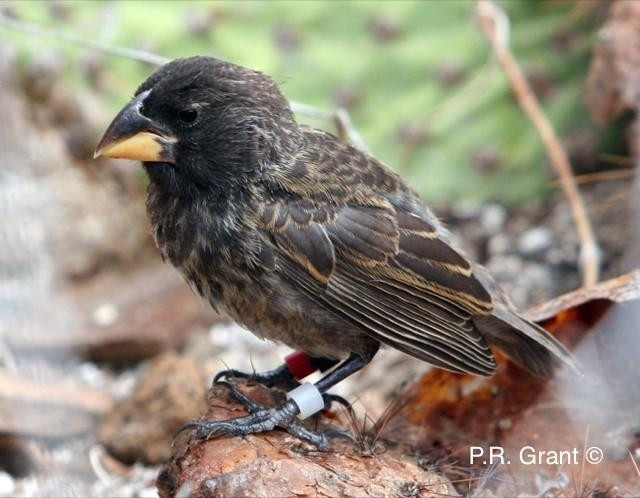Darwin's theory gets a turbocharge: Galápagos study finds new species developed in two generations
Darwin famously spent time studying the unique wildlife on the islands.

New species can develop in as little as two generations, according to four decades of fieldwork conducted on the Galápagos Islands.
A study published in the journal Science documents how a strange bird, which arrived on Daphne Major - a remote island in the archipelago - 36 years ago, has provided direct genetic evidence of a new species emerging in a very short time frame
According to the research, the bird mated with a member of another species, resulting in a new lineage that today consists of around 30 individuals.
The Galápagos Islands are a prime location for researchers study evolution as a result of natural selection. Darwin famously spent time studying the unique animal species there. His findings eventually led him to develop his groundbreaking theory of evolution.
"The novelty of this study is that we can follow the emergence of new species in the wild," said B. Rosemary Grant, from Princeton University. "Through our work on Daphne Major, we were able to observe the pairing up of two birds from different species and then follow what happened to see how speciation occurred."
In 1981, a graduate student working with the Grants on Daphne Major noticed that the male newcomer was much larger than the three resident species on the island and also sang an unusual song.
"We didn't see him fly in from over the sea, but we noticed him shortly after he arrived," said Peter Grant, also from Princeton. "He was so different from the other birds that we knew he did not hatch from an egg on Daphne Major."
The researchers took a blood sample before releasing the bird, which later went on to breed with a native ground finch, initiating a new lineage. They tracked this lineage - which they dubbed the "Big Bird" lineage - for six generations, regularly taking blood samples for use in genetic analysis.
Recently, a team from Uppsala University analysed DNA taken from the parent birds and their offspring, finding that the newcomer was actually a large cactus finch from the island of Española – which lies more than 60 miles to the southeast of the archipelago.
Because of the distance, the male finch was not able to return home and so chose a mate from one of the three species native to Daphne Major. Unlike their father, the male offspring were unable to attract females from other species due to the fact that their song was especially unusual and their beaks were strange sizes and shapes. As a result, the offspring mated with birds from their own lineage, accelerating the development of the new species.
Researchers have generally assumed that this process could have take thousands of years, but as a result of the unique circumstances on Daphne Major, it happened in just two generations.
"Charles Darwin would have been excited to read this paper," said Leif Andersson from Uppsala University.





















